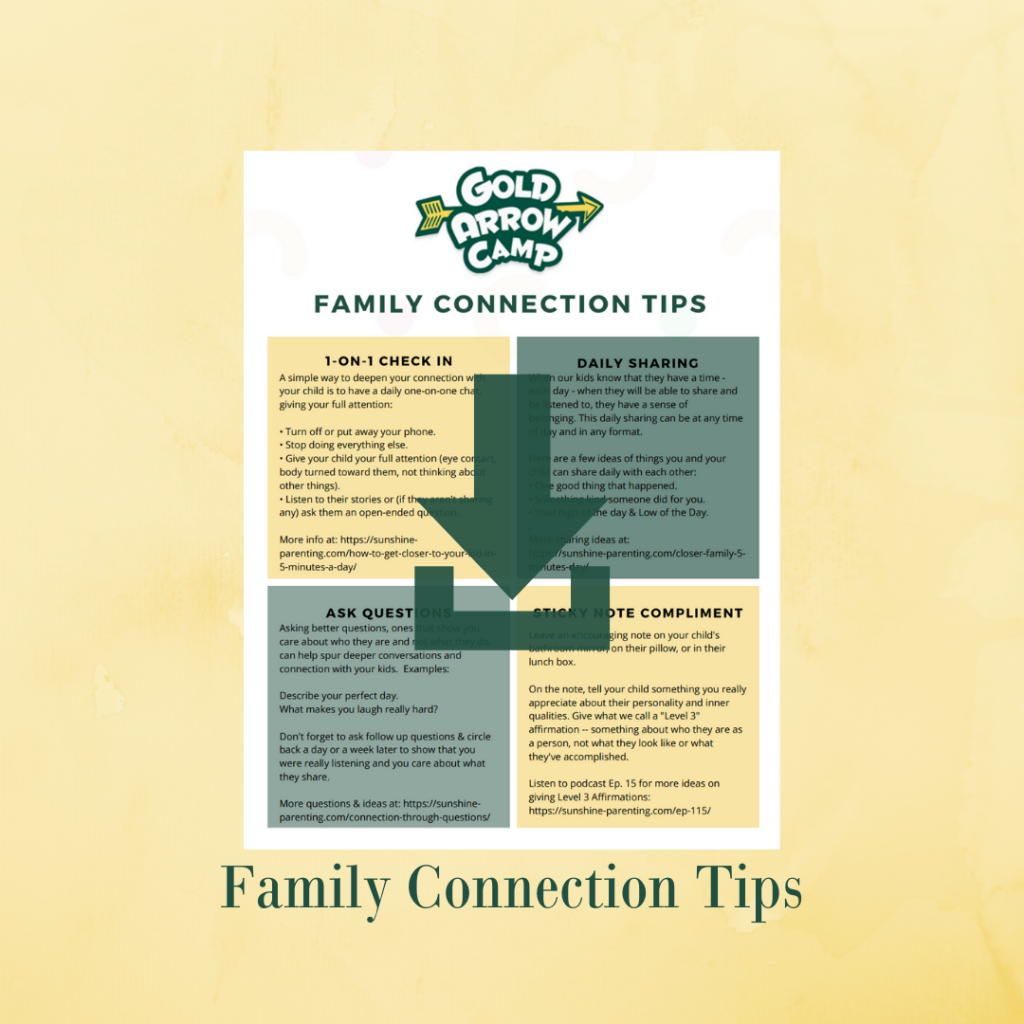Start the Year with Some GAC Goals
January is a great time to reevaluate priorities and set goals for the new year. One way to help children and young adults establish a strong commitment to a goal is to create a goal as a family. The Gottman Institute states, “Families who make goals together, keep goals together,” and Kelsey Down explains the benefits of creating a family goal:
“Many of our routines are built around work and family, but your autonomy and ability to make personal changes to your life can be undermined by your greater responsibilities. So if you want to exercise more or eat healthier, you are more likely to do so if your other family members exercise with you and eat the same things you do. But if you are the only one in your family that is actively working towards a goal, constantly removing yourself from your other family members’ habits (e.g. eating a salad during family pizza night) will eventually erode your desire to keep your resolutions. You might stick with eating salads for a while, but that pepperoni pizza will be more tempting when everyone else is enjoying it but you. You shouldn’t force your family to do what you’re doing, especially if they don’t want or need to, but you can easily find ways for you and your family to work together and achieve a common goal.”
If you want your children to unplug more or spend more time in nature, consider creating a goal in which everyone participates equally as a family, and framing the goal as a SMART goal (specific, measurable, achievable, relevant, and time-bound).
After two weeks (or more!) at Gold Arrow Camp, many campers are motivated to continue some of their camp habits – like using their phone less or practicing the friendship skills they used at camp. January is a great opportunity to refocus on some of those practices and intentions. In Audrey “Sunshine” Monke’s book Happy Campers, Audrey writes about the power of bringing the magic of camp (and the habits we learn while going to camp) home. Here are five ideas inspired by our healthy habits at GAC to help your family come up with a family goal for 2024.
1. Complete the 1,000 Hours Outside Challenge!
1,000 Hours Outside is a “movement to reclaim childhood, reconnect families, and live a fuller life.” The goal is to spend 1,000 hours outside in one year. 1,000 Hours Outside has free tracker sheets that are available to download. There are many benefits to spending time outside, however the National Wildlife Federation found that the average American child spends four to seven minutes in unstructured outdoor play each day. As a family, brainstorm ways to spend more time outside in 2024! Every Kid Outdoors provides families of 4th graders with free passes to all of the national parks. Create a list of different national parks, trails, hikes, local parks, and places to visit as a family, or plan a bigger outdoor adventure and go on a family camping trip!
2. Come up with fun, screen-free activities and set screen-time limits as a family.
Decide what would work best for your whole family (both parents & kids!), and come up with parameters that you agree on as a family. Maybe everyone agrees to plug in and turn off their phones by 8pm each night, or you could download an app that helps everyone in your family monitor their screen time and social media usage and create a family challenge (maybe with prizes!) for whoever uses their screens the least. In Happy Campers, Audrey shares a great conversation format for talking about screens with your children. As a family, consider brainstorming fun screen-free activities that you want to do together in 2024, for example, a card game every Wednesday night, or a hike or bike ride together every Sunday. Write your ideas down and post them somewhere you’ll see them, or create a checklist so you can check off as you try each person’s suggestions.
3. Set a family reading goal.
At Gold Arrow Camp, counselors read to campers every night (even our oldest campers!). Talk about which books each family member is going to read this year, or establish a daily or weekly time when your family reads together. For younger children, select a chapter book to read as a family. Make visiting the local library part of your weekly routine. My family enjoys following each other on Goodreads (a reading social media platform). When we see each other in person, we have lots of great conversations about what we’re reading and give each other book recommendations.
4. Establish a sharing practice.
At Gold Arrow Camp, campers share their highs and lows, or something else about their day, every night at campfire. In Happy Campers, Audrey discusses the benefits of daily sharing. Find a time for your family to connect and share each day. This could be sharing highs and lows, or responding to a different question each night at dinner. If evenings are busy, find a time when you are consistently together as a family (breakfast, right before bed, in the car) and establish a routine of sharing, listening, and connecting with each other!
5. Pick a theme for the year!
Each year at Gold Arrow Camp, we choose a summer theme. In 2023, our theme was Count on Me, and we talked about ways we can be more dependable and reliable people! Here is more information on choosing a family theme.
More Resources:
*Free PDF Download* Screen Time: 3 Steps to a Successful Family Meeting
The Gottman Institute: Make Your New Year’s Resolutions a Family Affair
How Nature Can Make You Kinder, Happier, and More Creative
Happy Campers at Home: 4 Ways to Boost Family Relationships
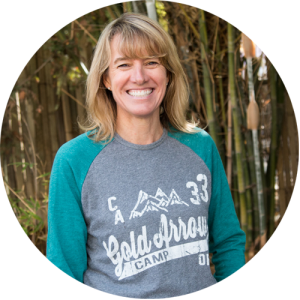 Audrey “Sunshine” Monke, GAC’s Chief Visionary Officer, researches, writes, and speaks about parenting, social skills, and strategies for raising thriving kids at Sunshine Parenting. In her book, Happy Campers: 9 Summer Camp Secrets for Raising Kids Who Become Thriving Adults, Sunshine shares simple ideas parents can use to create the fun, connection, growth, and happiness of GAC at home. Here are four of Sunshine’s favorite connection tips for families.
Audrey “Sunshine” Monke, GAC’s Chief Visionary Officer, researches, writes, and speaks about parenting, social skills, and strategies for raising thriving kids at Sunshine Parenting. In her book, Happy Campers: 9 Summer Camp Secrets for Raising Kids Who Become Thriving Adults, Sunshine shares simple ideas parents can use to create the fun, connection, growth, and happiness of GAC at home. Here are four of Sunshine’s favorite connection tips for families.
If you were to ask me the most important thing parents can provide their children, camp counselors can provide campers, and teachers can provide students, I can sum it up with one word: Connection.
-Audrey “Sunshine” Monke
Building a relationship and connecting with kids—while also helping them learn to connect with each other and form friendships—is the most important experience we can provide our kids to inoculate them against the inevitable setbacks they will face in life.
Here are some simple ideas from GAC for boosting family connections.
One-on-One Check Ins
On our counselor job description, one of their duties is to “check in with each camper, every day.” We call these check-in meetings “One-on-Ones.” Counselors ask campers specific, open-ended questions to elicit how campers are feeling. The counselors ask about their friendships, activities, how much they’re missing home, what’s going well, and if they need help with anything.
These are individual conversations, out of earshot of other kids, that last anywhere from two to five minutes. The campers get accustomed to the check-ins, so they’re not surprised when their counselor starts chatting with them.
As a simple way to deepen your connection with your kids, and know how you can best support them, try having at least one daily one-on-one chat with each of them, modeled after what camp counselors do:
Turn off or put away your phone (and have them put theirs away, too).
Stop doing everything else (cooking, looking at a magazine, etc.).
Give your child your full attention (eye contact, body turned toward them, not thinking about other things).
Ask them a few open-ended questions. “Tell me about the best part of your day” is an easy place to start.
Your one-on-one chats can be anytime. You can make it a daily ritual over an after-school snack, while sharing a hot drink, or while tucking them in at bedtime, but that small, concerted daily investment of time will lead to a closer connection between you and your kids.
If your kids are already teens, know that the best way to have one-on-one chats is to be open to whenever they initiate the talk with you rather than forcing them to be on your schedule. When they talk, drop everything else you’re doing, focus on them, and listen!
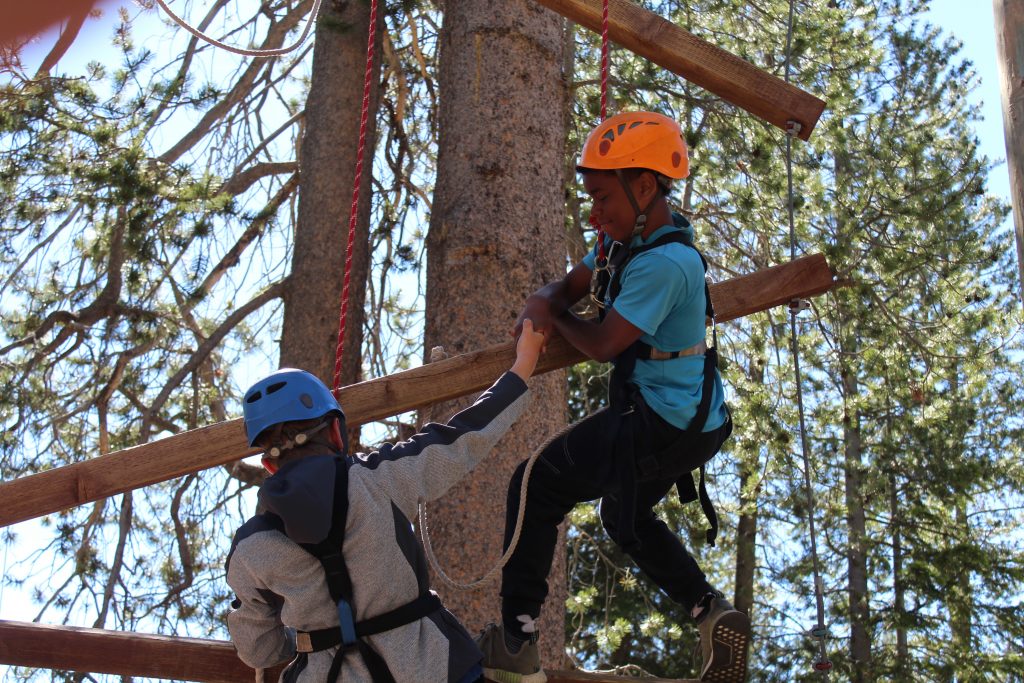
Daily Sharing
A highlight of each day at camp is our evening campfire. Gathered around the fire, counselors lead a daily sharing practice. Campers remember these conversations fondly and the evening campfires are many campers’ and staff members’ favorite camp memories.
Find a time each day – dinner or bedtime are often good times to set up a consistent sharing practice – to spend just a few minutes sharing with each other.
The only rules for your daily sharing are that one person speaks at a time and everyone else listens to the person speaking. Your kids may need a few reminders, as listening attentively is a skill most of us need to work on!
Your kids (especially if they are preteens or teenagers) may balk when you bring up the idea of daily sharing and do it for the first time. Stay strong. They will eventually learn to appreciate your daily sharing practice. Even if they continue balking, don’t stop. Even if they don’t show it on the outside, they will eventually come to appreciate a time each day when caring people listen to what they have to say.
Here are a few daily sharing ideas:
“Highs & Lows” or “Roses & Thorns”
This is a simple and well-known sharing practice where each family member shares something good that happened in their day (a high) and something bad (a low). Sharing often leads to stories and discussion about different events — the side track conversations are good, so let those happen! There are also additions you can add. At camp, we often do High, Low, and Hero, where each camper shares their high and low as well as someone who was kind to them or a “hero” that day. Another twist on this activity is called “Rose, Thorn and Leaf.” The rose is the high, the thorn is the low, and the leaf is something you’re looking forward to.
Three Good Things
Each person shares three good things that happened in their day or three things they are grateful for. This gratitude exercise (when journaled) has been proven to reduce depression symptoms. While your sharing conversation won’t be written down (unless you choose to do so), it can still bring a positive focus to your sharing. Ideally, because everyone anticipates the daily sharing, everyone will be more aware of and looking out for the positive things that happen every day.
Kindness
Sunshine loves the idea of sharing something each person did that was kind or something kind someone else did for you. Focusing on kindness is incredibly important in our increasingly unkind-seeming world.
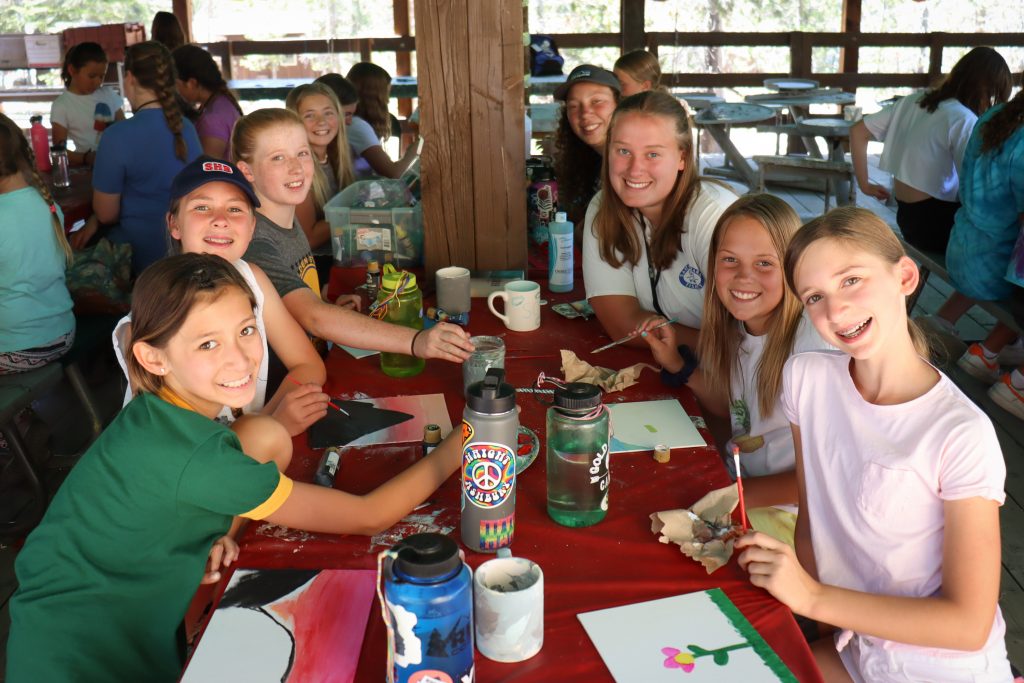
Ask Questions
Questions are a great way to connect with each other and get conversations started.
Here are a few to get you started (from the Questions for Connection GAC counselors use):
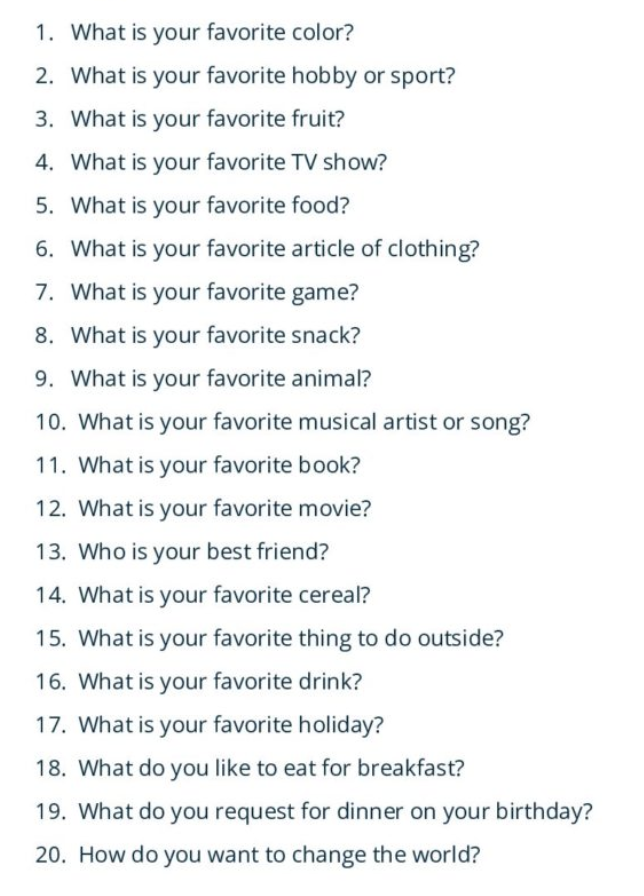
Sticky Note Compliment
At GAC, we focus on campers’ strengths and encourage them to think about building upon their strengths. Often as parents we spend a lot of time managing our children or helping them with things they are not good at. A great way to connect and make your child feel great is to leave an encouraging note on your child’s bathroom mirror, on their pillow, or in their lunch box. Tell your child something you really appreciate about them and something that’s an inner quality or strength.

